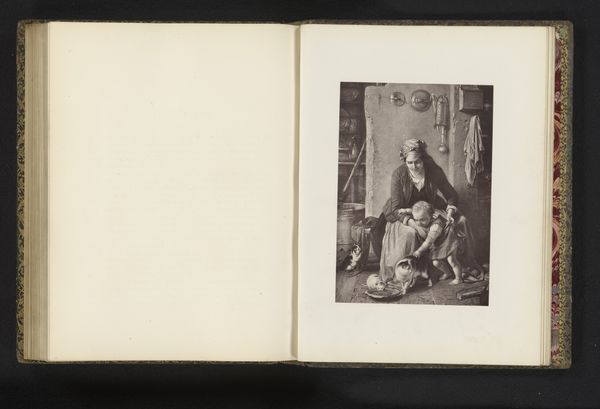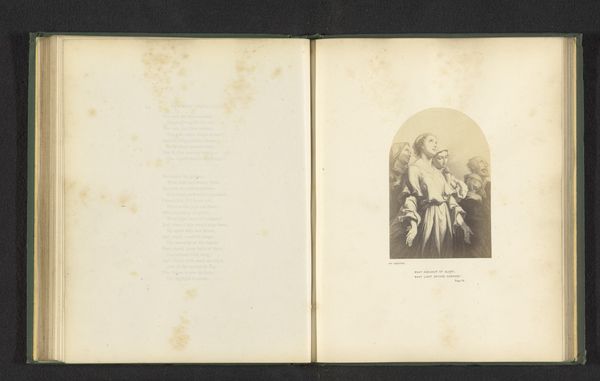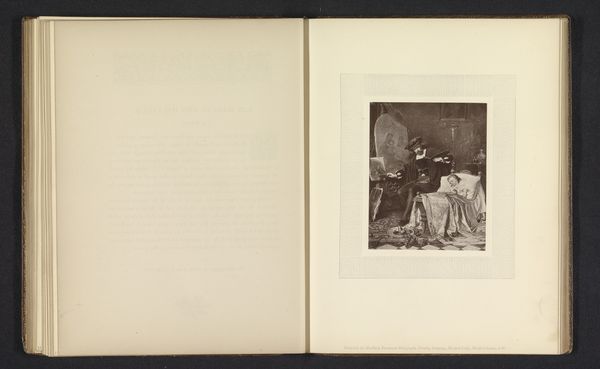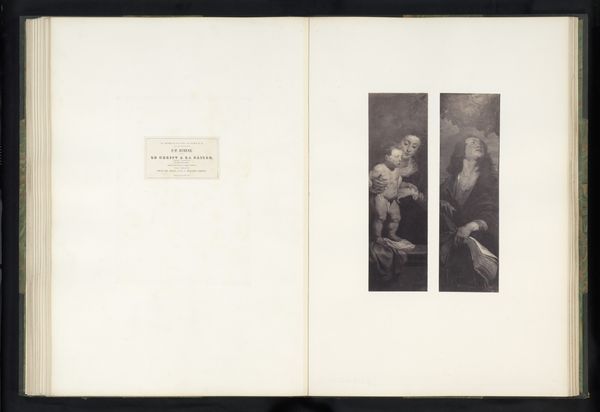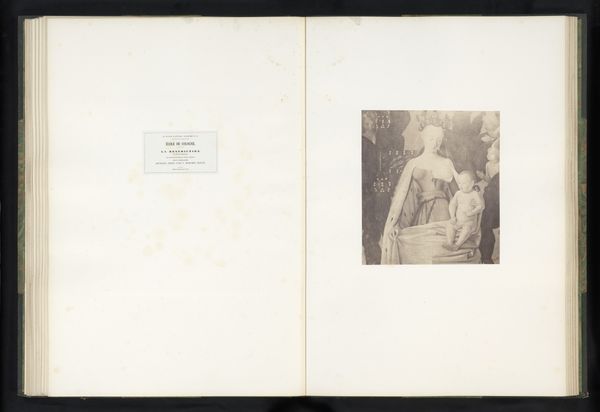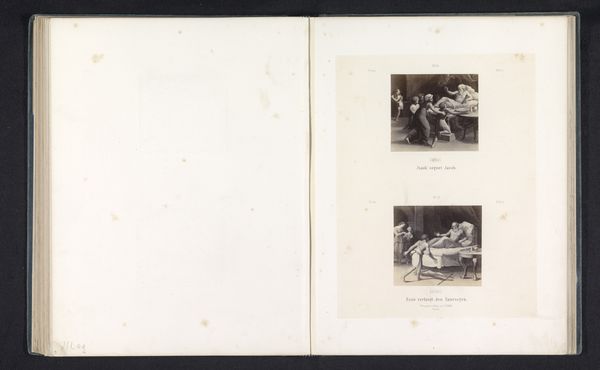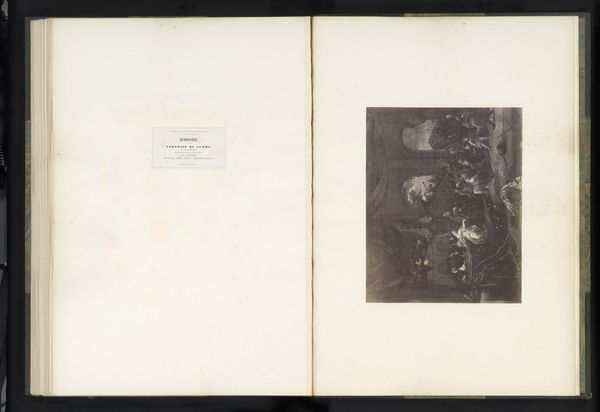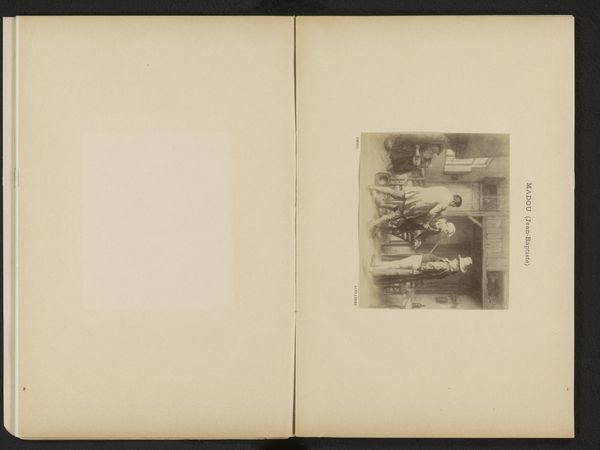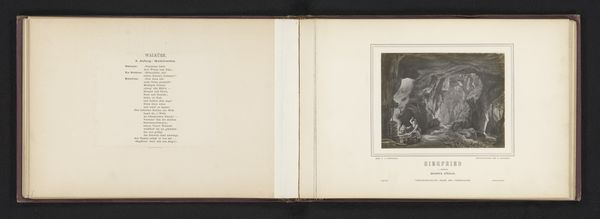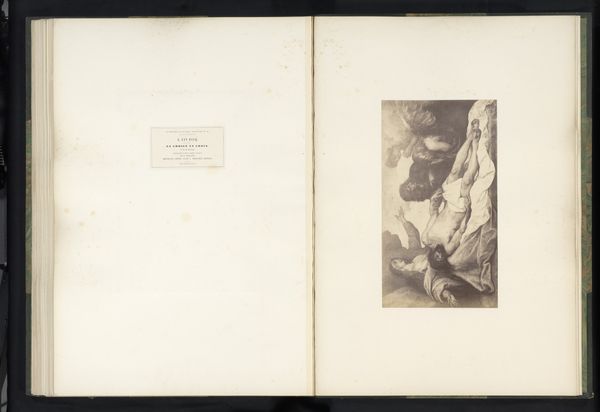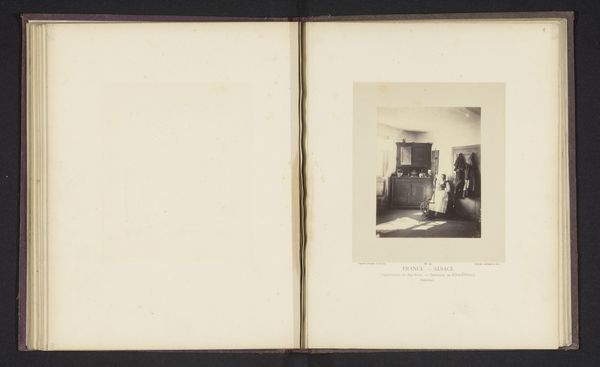
print, photography
# print
#
photography
Dimensions: height 358 mm, width 303 mm
Copyright: Rijks Museum: Open Domain
Curator: This is a photographic print made before 1861 after Cornelis de Vos's painting of Abraham Grapheus. Editor: Immediately, it's the muted tones that strike me. That sepia wash lends a certain weight, doesn’t it? Like peering through history itself. What’s interesting about the work for you, looking beyond just the process? Curator: For me, the subject's symbolic attire commands attention. Notice the coat adorned with guild medals, suggesting not just a profession but a sense of civic identity—a powerful symbol of belonging and pride, particularly evocative given the guilds’ significant societal roles. Editor: Indeed. And what about the labour involved in reproducing a painting via photography, particularly in that era? Think of the time spent meticulously setting up the shot, dealing with lengthy exposure times, not to mention the materials themselves—the specific chemicals, the paper types. There is craft in the process that we should admire and perhaps try to contextualize more. Curator: It is tempting to only contextualize the subject through materials, as this choice underscores photography’s rise as a means of disseminating art beyond its original location, democratizing access to masterpieces, so to speak. I find the emotional gravity so present, perhaps accentuated by the sitter’s intense gaze, reminiscent of those Northern Renaissance portraits, so starkly confronting. Editor: And isn’t that dissemination of knowledge, and making images accessible, also connected to shifting social power, changing means of both production and consumption? Perhaps the goal isn’t to exactly democratize masterpieces, but to make them fungible and collectible—another item subject to the material world? Curator: Point taken! Regardless, examining the subject, execution, and their combined symbolism can illuminate much about the social dynamics that the image both reflects and actively participates in. Editor: Right, which in turn might reflect upon our moment and context today... thanks for helping to unravel all of that.
Comments
No comments
Be the first to comment and join the conversation on the ultimate creative platform.


